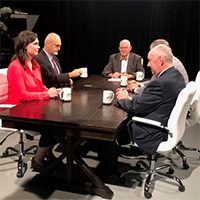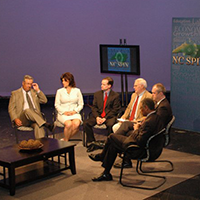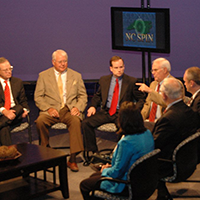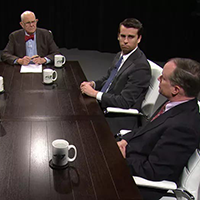Can’t we at least take a break from elections?
Published November 21, 2024
By Tom Campbell
Editor's note: This column was written prior to Matt Gaetz withdrawing from consideration.
We haven’t even recuperated from the intense and exhausting elections earlier this month, yet already people are already talking about the 2026 elections. Count on them being largely a referendum on Trump.
The president-elect has indicated he intends to deconstruct, reduce or at least drastically change federal programs like Social Security, Medicare, Medicaid, immigration and education. These changes might please the MAGA crowd, but when he starts messing around with grandma’s Social Security or Medicare count on Trump’s support to wane.
One-third of the members of the US Senate will be up for election in ’26 - 20 Republicans and 13 Democrats, including North Carolina Senator Thom Tillis. The Senator is already under a microscope, examining how he will vote on the confirmation of cabinet secretaries and individuals who must be confirmed by the Senate.
Tillis has generally voted lockstep with his Republican caucus, but there have been notable exceptions. The names of appointments announced for high-ranking positions should give him pause. I believe Trump specifically chose some of these nominees, such as Matt Gaetz, just to see how far he can go without being stopped.
We will get an early report card on Trump with those confirmations. Can Trump arrange to have these appointments approved using the unusual “recess appointment” process, avoiding Senate hearing or confirmation votes? How many nominees will fail to be confirmed and how will Trump react? And what will these hearings show about relations between the president and Congress? Will there be any checks and balances? January will prove interesting.
Here’s Tillis’ conundrum. If he votes against confirmations, he will likely feel Trump’s ire and might be primaried in ‘26, meaning Republicans will run someone against Tillis in the primary election. Contested primaries are costly and often create schisms within the party, some of them irreparable. In a decidedly purple state like North Carolina any crack could cost Tillis his re-election. Conversely, if Tillis is just a rubber stamp for Trump and votes for most all the Trump initiatives, he will ignite the flames for Democrats.
I have observed Thom Tillis ever since he first came to the North Carolina House, quickly rising to become Speaker. He was one of the most effective Speakers in recent memory. He made the trains run and usually on time. He managed a fractious caucus, united them in passing legislation and was a consummate vote counter, never putting an issue on the floor if he didn’t have enough votes to pass it.
But Thom has a Trump card. If he gets bullied or made too much of a scapegoat, Tillis could retaliate by indicating he just might not seek re-election. Republicans know their chances of keeping control of the Senate depend, to a large extent, on getting incumbents re-elected. If Tillis were to withdraw, North Carolina’s senate race could be up for grabs.
And if, for some reason, these 20 incumbent Senate Republicans (or even half of them) decided to do so, they could become a powerful voting block which could either prevent Trump’s wildest initiatives or at least modify them. They have more power than they know. But do they have the backbone? So far, Republicans haven’t shown much.
Rumors around Raleigh are that Roy Cooper is being urged to run against Tillis in ’26. Cooper leaves the governor’s office one of the most popular governors in recent history. The last time a similar challenge occurred in our state was 1984, when Governor Jim Hunt challenged incumbent Senator Jesse Helms. Cooper has been a successful governor operating with a Republican controlled legislature. Roy has successfully opposed some of their more objectionable initiatives, vetoing more bills than all other governors combined. Whether the Senate candidate is Cooper or someone else, Democrats will be be ready, well financed and strategically prepared to run against Tillis. They want that seat.
All 14 of our congressional delegation will be up for re-election in the mid-terms; 10 of them are Republicans. And while congressmen don’t have the vote to confirm appointments there will be plenty of instances where Trump will put them to the test. By election day, November 3, 2026, Trump will have been in office 20 months, time enough for the public to judge him, as well as members of congress.
The party of the president usually loses seats in mid-term elections.
All 120 members of our legislature will be up for vote in 2026. Republicans have voting majorities in both houses, but not veto-proof majorities. There are some potentially big issues that might arise in the long session in 2026, like gambling, and voters will be reacting to actions taken. Will they also be impacted by Trump?
It would be nice to have a break. But it won’t be long before we start hearing more about 2026.
Tom Campbell is a Hall of Fame North Carolina broadcaster and columnist who has covered North Carolina public policy issues since 1965. Contact him at tomcamp@carolinabroadcasting.com
.







